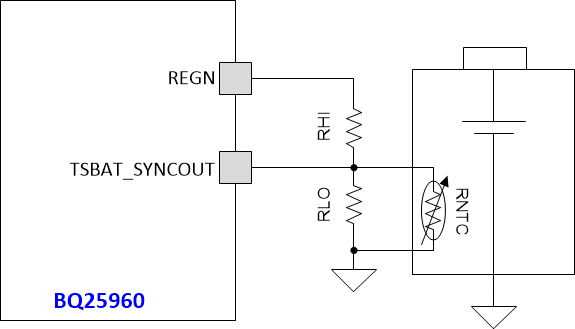ZHCSNF1 February 2021 BQ25960
PRODUCTION DATA
- 1 特性
- 2 应用
- 3 说明
- 4 Revision History
- 5 Description (continued)
- 6 Device Comparison Table
- 7 Pin Configuration and Functions
- 8 Specifications
-
9 Detailed Description
- 9.1 Overview
- 9.2 Functional Block Diagram
- 9.3
Feature Description
- 9.3.1 Charging System
- 9.3.2 Battery Charging Profile
- 9.3.3 Device Power Up
- 9.3.4 Device HIZ State
- 9.3.5 Dual Input Bi-Directional Power Path Management
- 9.3.6 Bypass Mode Operation
- 9.3.7 Charging Start-Up
- 9.3.8 Adapter Removal
- 9.3.9 Integrated 16-Bit ADC for Monitoring and Smart Adapter Feedback
- 9.3.10 Device Modes and Protection Status
- 9.3.11 INT Pin, STAT, FLAG, and MASK Registers
- 9.3.12 Dual Charger Operation Using Primary and Secondary Modes
- 9.3.13 CDRVH and CDRVL_ADDRMS Functions
- 9.4 Programming
- 9.5 Register Maps
- 10Application and Implementation
- 11Power Supply Recommendations
- 12Layout
- 13Device and Documentation Support
- 14Mechanical, Packaging, and Orderable Information
9.3.10.3 IC Internal Thermal Shutdown, TSBUS, and TSBAT Temperature Monitoring
The device has three temperature sensing mechanisms to protect the device and system during charging:
- TSBUS for monitoring the cable connector temperature
- TSBAT for monitoring the battery temperature
- TDIE for monitoring the internal junction temperature of the device
The typical TS resistor network on TSBAT_SYNCOUT is illustrated in Figure 9-8. The resistor network on TSBUS is the same.
 Figure 9-8 TSBAT_SYNCOUT Resistor
Network
Figure 9-8 TSBAT_SYNCOUT Resistor
NetworkThe RLO and RHI resistors should be chosen depending on the NTC used. If a 10-kΩ NTC is used, use 10-kΩ resistors for RLO and RHI. If a 100-kΩ NTC is used, use 100-kΩ resistors for RLO and RHI. The ratio of VTS/REGN can be from 0% to 50%, and the voltage at the TS pin is determined by the following equation.

The percentage of the TS pin voltage is determined by the following equation.

Additionally, the device measures internal junction temperature, with adjustable threshold TDIE_FLT in TDIE_FLT register.
If the TSBUS_FLT, TSBAT_FLT, and TDIE_FLT thresholds are reached, the Switched Cap or Bypass Mode is disabled and CHG_EN is set to ‘0’, and the start-up sequence must be followed to resume charging. The corresponding STAT and FLAG bit is set to ‘1’ unless it is masked by the MASK bit. If TSBUS, TSBAT, or TDIE protections are not used, the functions can be disabled in the register by setting the TSBUS_FLT_DIS, TSBAT_FLT_DIS, or TDIE_FLT_DIS bit to ‘1’.
TSBUS_TSBAT_ALM_STAT and FLAG is set to ‘1’ unless it is masked by corresponding mask bit when one of the following conditions is met: 1) TSBUS is within 5% of TSBUS_FLT threshold or 2) TSBAT is within of TSBAT_FLT. If the TSBUS_FLT or TSBAT_FLT is disabled, it will not trigger a TSBUS_TSBAT_ALM interrupt. Using the TDIE_ALM register, an alarm can be set to notify the host when the device die temperature exceeds a threshold. The TDIE_ALM_STAT and TDIE_ALM_FLAG bit is set to ‘1’ unless it is masked by TDIE_ALM_MASK bit. The device will not automatically stop switching when reaching the alarm threshold and the host may decide on the steps to take to lower the temperature, such as reducing the charge current.